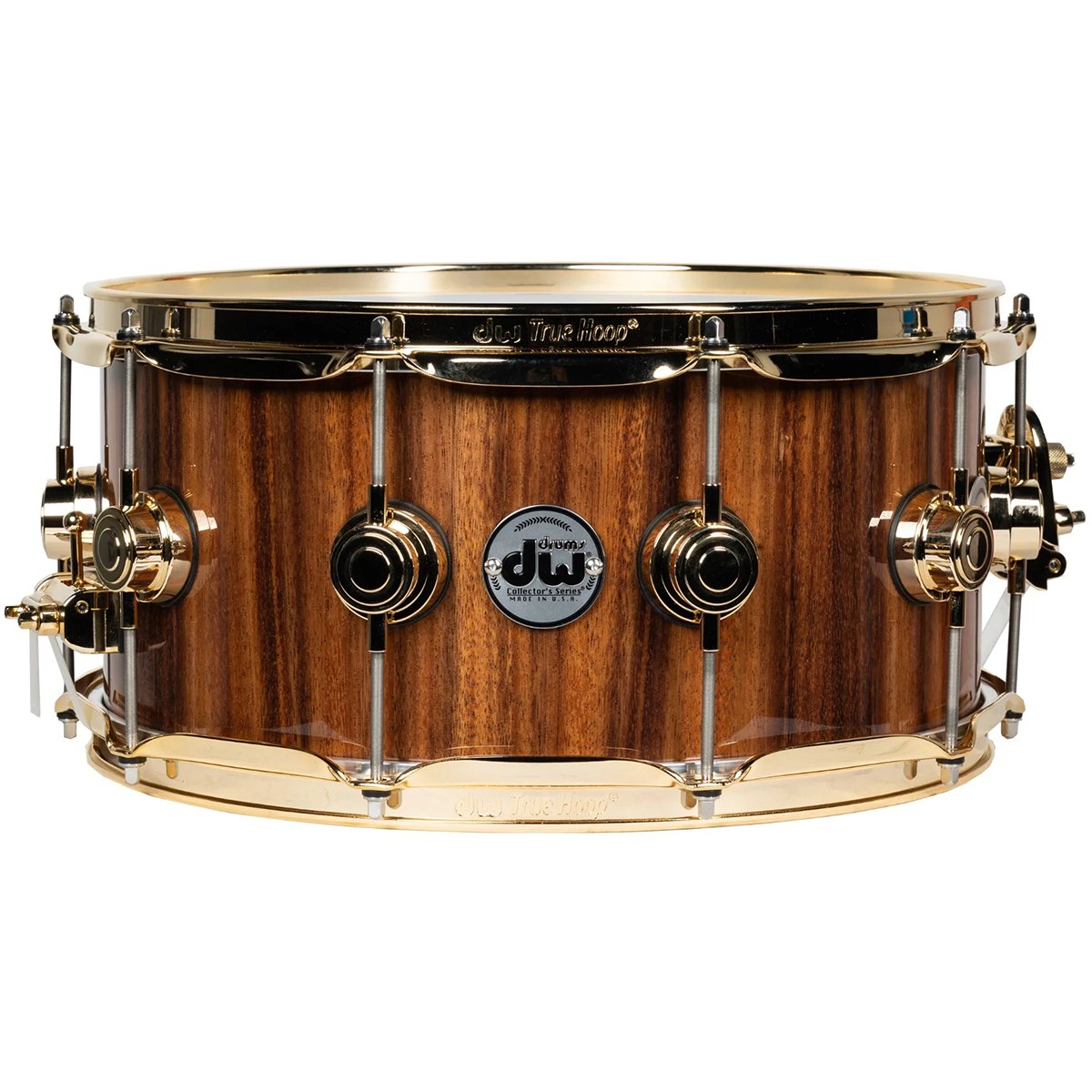
It’s been nearly 40 years since his last performance. Still, you’d be hard pressed to find someone unfamiliar with his legend, even after all that time. Unquestionably, he is among the most famous and influential drummers who have ever lived. No one disputes his outstanding technical ability and musical adaptability. Many of his well-respected, talented contemporaries called him “the greatest drummer of the Jazz Age.” Some go so far as to call him “the greatest drummer who has ever lived.”
Very nearly literally, you could say he was born with drumsticks in his hands. His natural skill for percussion became evident as he took his first steps, and his professional career started soon after. By age 4, he was well beyond banging on pots and pans with silverware, taking far more lucrative gigs, playing theaters on New York City’s famous Broadway.
As the highlight of his parents’ vaudeville show, "Baby Traps the Drum Wonder" delighted crowds up and down the Big White Way. In his teenage years, he and his stage band performed across the US and overseas, making him one of the best-paid child entertainers of his time.
Unfortunately, most childhood stars find that fame, fortune, and opportunities generally expire long before adulthood (ask Corey Feldman about it). This was not the case for “Baby Traps,” who wielded his ferocious talent night after night for the rest of his life.

The one and only Buddy Rich
Buddy Rich burned through life with the intensity, skill, drive, extraordinary talent, and outspoken personality you’d expect to find in a fictional character. If his life could be read like a road map, Buddy’s course was set from birth, with no detours, pit stops, or time wasted on the road ahead. Turning 18 in 1935, Rich came of age during the exciting rise of "Big Band" and "Swing" era music. Hailing from Brooklyn, NY, he lived just a short subway ride away from the heart of the burgeoning Jazz scene. Having spent his entire youth honing his natural talents, Buddy Rich found himself perfectly positioned at the right time and place in history.
Throughout his illustrious career, he has served as a superstar sideman in some of the most popular bands, collaborated with jazz's most legendary musicians, and eventually led his own all-star band. Beyond that, his quick wit and outspoken personality made him a late-night talk show favorite. Without a doubt, Buddy Rich is one of the greatest and most celebrated jazz drummers to have ever lived, with a popularity that has lasted long after the jazz age began to fade.
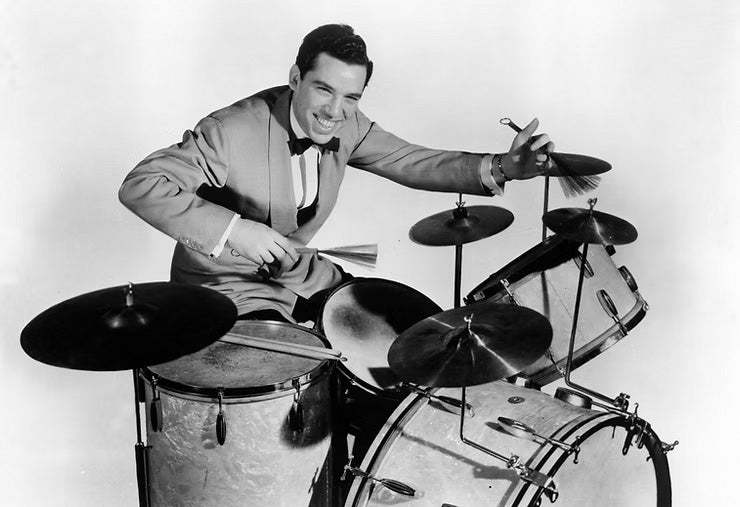
Early press photo of Buddy Rich, late 30’s
All that’s Jazz (and none that’s not)
Jazz is commonly called “America’s greatest original art form,” yet applying a complete definition is nearly impossible. If you ask 100 music lovers, you’ll get 100 different interpretations. If you ask 100 Jazz players, you’ll get 100 more interpretations--plus a sizable list of music that isn’t quite worthy to be called Jazz. For example, mentioning “square” band leader Glen Miller in the same breath as Swing Band leader Benny Goodman could very easily get you in a brawl.
The origins of jazz can be traced back to African American communities around New Orleans and the nearby Delta area during the early 20th century. It’s a patchwork of spiritual music, blues, and ragtime with syncopated African rhythms and modified Western harmony. Jazz evolved rapidly, growing into distinctly different styles, genres, and sub-genres, each characterized by distinct tempos, harmonic structures, and idioms. These styles range from popular or specialized, big band or small combo, vocal or entirely instrumental, dance-oriented, and/or listener-focused, and sometimes a mix of these elements.

Duke Ellington and his Band, 1920s
Although not entirely descriptive, Jazz might be best considered a personal expression of musical freedom and an experience that’s never the same way twice.
If defining Jazz is a challenging task, it’s nothing compared to the skill set required to become a proficient Jazz musician. Being a master of technique on your instrument is essential. That in itself can take years of intensive dedication, and that’s just the beginning. The ability to "shake hands on the bandstand" and play with a group of musicians you’ve likely never met requires another kind of intense preparation. It takes an extensive knowledge of standard tunes, common chord changes and turnarounds, phrasing, rhythmic structures, and the "musical slang" of each style, committed to memory. Without this kind of musical vocabulary, securing a gig (or even an invitation to sit in) won’t happen, no matter how technically skilled you are on your instrument. Of course, that’s just the bare-bones framework.
Jazz stands in stark contrast to European and American classical music, where musicians are expected to strictly interpret a composer's work as written in the manuscript. In its purest style, Jazz is a true expression of the musician's artistry. From the joyful, foot-stomping counterpoint of Dixieland through the up-tempo, cerebral, and complex Bop and Modal Jazz, player interpretation, improvisation, and a player's unique "voice" bring the music to life. More than any other style, jazz is a "musician's music," demanding creativity and offering freedom. It’s alive and in the moment, requiring almost supernatural focus on the music, yourself, and the players around you. Known for chewing up and spitting out talent, it’s in this demanding and ever-changing art form that Buddy Rich felt most relaxed.
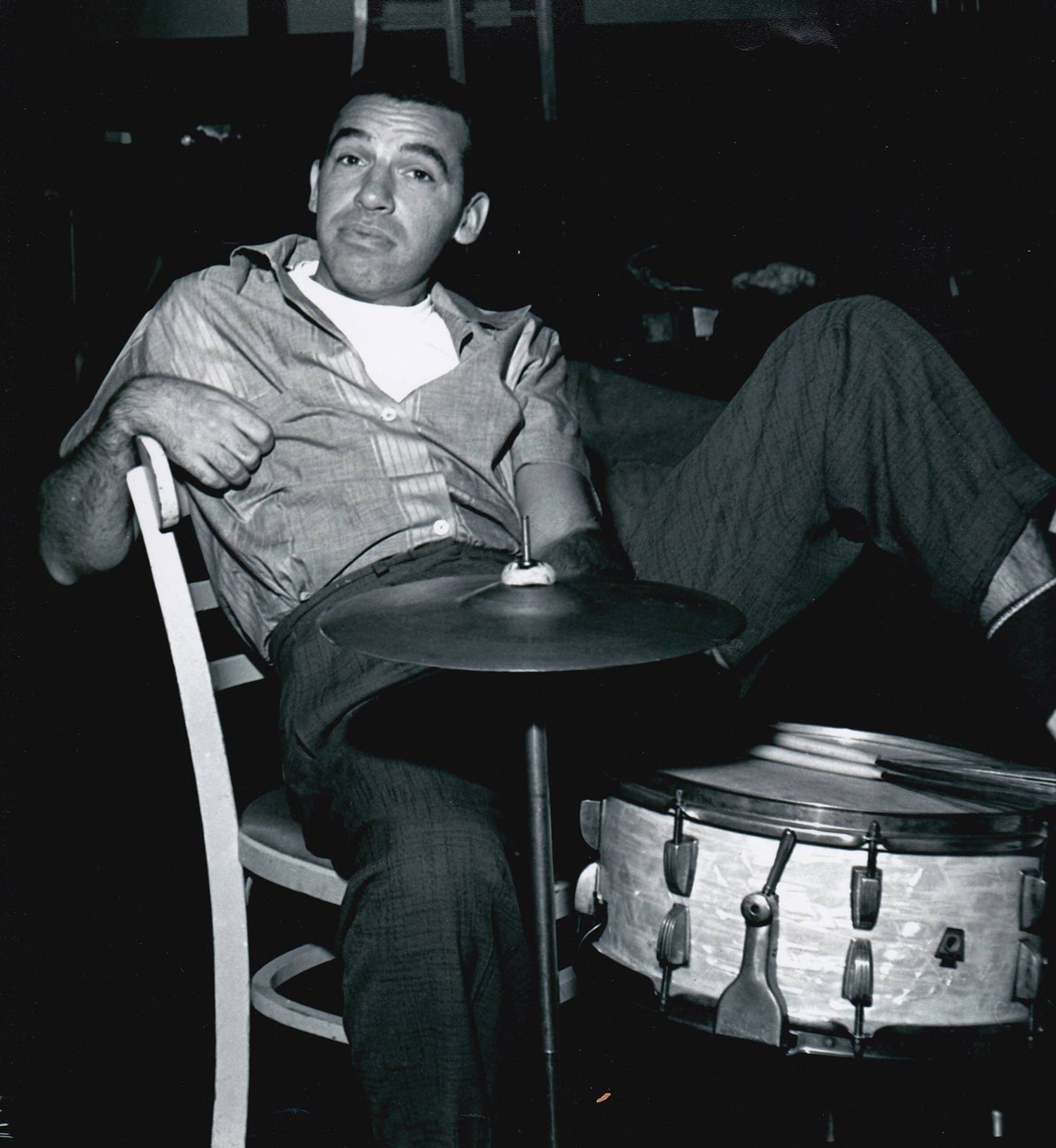
“Bring it on!” Buddy Rich: candid, confident, and ready for anything (late 30s)
The Swing Era
In the mid-1930s, Jazz exploded in popularity across America, emerging from the shadows and speakeasies into the mainstream. Undoubtedly, the most popular era in Jazz, “Swing” is recognizable for its uneven “dotted 8th note rhythms,” which give the music a light, joyful skipping sound, that’s perfect for dancing. Swing bands generally have a dozen or more players on the bandstand, requiring a more structured and commercially consumable approach than Dixieland's raucous freeform improvisation.
America’s youth packed bandstands and halls, escaping the depression and wartime era gloom, as they danced the night away to the highly motivating rhythms and power of Big Band Swing. Headlining bandleaders such as Duke Ellington, Count Basie, Artie Shaw, the Dorsey brothers, among many others, became the “rock stars” of the era. Featured soloists, including Coleman Hawkins and Bunny Berigan, as well as singers like Billie Holiday and Ella Fitzgerald, also became massive stars. However, in Swing and Big Band music, the spotlight wasn't reserved for front-and-center artists only; it also shone brightly on the drummers. The drummer played a crucial role in shaping the band's overall sound and could elevate a band's performance to new heights. With their ability to positively electrify a band and deliver show-stopping solos, drummers like Chick Webb, Jo Jones, Gene Krupa, and, of course, Buddy Rich put the swing in the Swing era.
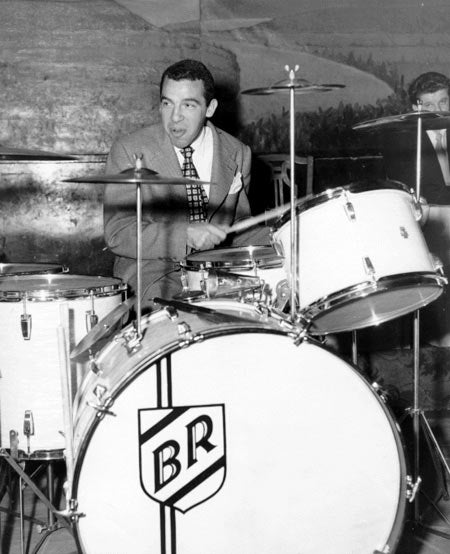
A legend rises
Buddy Rich was a highly disciplined force of nature. Even at a young age, he commanded an astounding technique that’s still rarely approached. Like a one-armed pool hustler, Rich could handle one-handed drum rolls with more speed, precision, and dynamic control than most could with both hands. In fact, after suffering a broken arm, Buddy fulfilled weeks' worth of bookings with his arm in a cast, literally, without missing a beat. All the same, he was never a stick twirling showoff, preferring to let his technique serve his extraordinary natural musical gifts. His mastery of drumming rudiments afforded him blinding speed, subtlety, immense power, and turn-on-a-dime dynamic control. As a soloist, he was mesmerizing, and in support of a band, he was legendary. With his metronome-like center of the beat timing, superb musical communication, and raw instinct, Buddy could bring out the best in everyone on the bandstand.
The only fundamental skill Buddy lacked was the ability to read drum charts, but he didn’t let that hold him back. After one listen, he could recall every accent and the precise number of measures in each phrase, even on the most complex charts. Without his head buried in charts, Buddy was free to use his hyper-awareness of the music and the players around him, turning his only perceived handicap into a valued skill.
Buddy demanded perfection for himself and wasn’t afraid to demand it from others. That worked out swimmingly….most of the time. Other times, it caused intense arguments and the occasional shoving match. Unlike too many of his contemporaries, he didn’t drink or use drugs, and didn’t have much tolerance for those who did. In his off time, he liked to keep himself nimble and sharp by practicing martial arts. He was notoriously easy to get along with, provided you were willing to do it his way, or you made a mistake one too many times in his band—but that’s another story.
Buddy Rich’s reputation for excellence among musicians and swing lovers grew quickly, and he wasn’t afraid to admit they were right. Some found that conceded, while others admired his confidence. Either way, there was no way around such a strong player and personality as Mr. Drums, aka Buddy Rich.

The Big Band Drummer
Rich landed the first professional gig of his adult life in 1937, playing in the high-profile and immensely popular Joe Marsala sextet. The band featured top-shelf players and a calendar full of high-paying engagements. It’d be hard for anyone to find a better first gig, but it wasn’t long before Buddy was ready to move on to “bigger” and better things. Unhappy with the limitations of supporting a small six-piece band, Buddy was after the challenges and rewards that Big Band Jazz had to offer. While that may sound ambitious for a newcomer, with a great gig, Buddy had the talent to score any gig he wanted—and he knew it. Soon, the whole world will know it too.
With a big band, you've accomplished something. You're a part of an overall sound with a lot of people, rather than one of the guys in a trio, quartet, or sextet. In a big band, you've got charts to play, cues to catch, fills to make, things to catch with the brass—there's a reason for you to be up there. You're an important segment of a big band.—Buddy Rich.
After only six months with the Marsala sextet, Buddy landed his first big band gig with the Bunny Berigan Band at the height of their renown. Riding high on the success of Berigan's (now) standard, “I Can’t Get Started With You,” Buddy found his way into one of the hottest swing bands in the East. Of course, fame and success open doors, and the money is steady, but that’s not what motivated him. Within a year, he was already seeking the next adventure.
Buddy Rich lived his life like he played his drums—in constant motion and with constant anticipation of what was coming next. In 1938, Benny Goodman’s band was the hottest ticket in Big Band Swing. He had a band full of A-list veterans, including Harry James in the trumpet section, Sax soloist Bud Freeman, and the legendary Gene Krupa on drums. As much as Buddy may have liked to work with Goodman, there was simply no vacancy.
In contrast to the well-established Goodman band, Artie Shaw’s big band was mainly composed of young, as-of-yet unknown talent, including the soon-to-be legendary singer Billie Holiday. Through high-profile New York City engagements, touring, and radio broadcasts, Shaw and his band of up-and-coming hotshots soon began to rival Goodman’s popularity. The only addition he needed was a superstar timekeeper. It took some persistence on the part of Tenor Sax phenom George Auld, a former bandmate of Buddy’s, to convince Shaw to consider a drummer who couldn’t read music. Additionally, Buddy had already gained a reputation for being “hot tempered.” It was Buddy’s remarkable ability to memorize and understand precisely how to bring the music to life after just one listen that earned him the job. Before long, this too came to an abrupt conclusion, and Rich was on the move again.
Before the end of ’39, Rich began the first of many on-again, off-again gigs in the legendary Tommy Dorsey band, which also marked the first collaboration and lifelong association with Frank Sinatra.
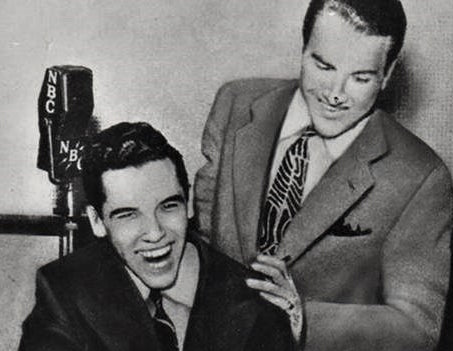
Artie Shaw and Buddy Rich circa 1939
"I have to relate my playing to tomorrow. I always felt like that. When I was with Dorsey, I was looking to get out of that band to go with another band that was hipper. And when I did that, I was looking for someplace else to go—because I was never satisfied. -Buddy Rich
Between 1937 and 1942, Buddy Rich manned the throne for three of the hottest Swing Bands in the world, becoming the highest-paid sideman in swing. Yet, Buddy didn’t have much say in his next gig. America’s involvement in WWII ensured that Buddy’s next job was with Uncle Sam, as a Judo instructor in the US Marines. Upon discharge in 1946, Buddy resumed his tumultuous on-again, off-again working relationship with the Dorsey band. In ’47, Buddy briefly led a big band of his own, with some financial backing from his Dorsey bandmate and pal, Frank Sinatra. However, Buddy’s first stint as a Band Leader didn’t last very long. The times were changing.

The Tommy Dorsey “Big Band” (Note a young Frank Sinatra over Rich’s left shoulder)
Buddy Rich and “post swing” Jazz
In post-war America, popular music shifted away from Dancehall music towards pop, ballads, and crooner music. In the Jazz world, a more complex, up-tempo style of Jazz emerged, better suited for listening than dancing to. Without ballrooms full of dancing couples, Big Bands began to give way to smaller combos and smaller venues.
In 1947, when I organized my first band--that band was so outside, it was ridiculous. People used to run out of the ballroom. I lost 280,000 dollars with that band. The reason was that I wanted a jazz band--at a time when nobody could dance to jazz. They were dancing to a polite kind of Swing—but I’ve never had a polite band. -Buddy Rich
By the 1950s, as Rock and Roll began to develop, Jazz remained popular, but the mainstream Jazz era was all but over. Although he’s most commonly associated with Swing and Big Band styles, Rich played every type of Jazz, alongside the best players of every style. Unlike many of his talented and popular contemporaries, who were starving for work, Rich continued to thrive in the post-swing world — in fact, he was just getting started.
Although his first attempt at leading a band didn’t last, Buddy was already as famous and in demand as any band leader. This opened up a world of possibilities, allowing the freedom to pursue touring and recorded collaborations with the musicians of his choosing.

Jazz at the Philharmonic (1944-1967)
What started as a benefit concert soon became one of the most important yearly events in the history of Jazz, for listeners and players alike. From 1944 to 1967, a series of all-star concert tours featured a rotating cast of Jazz giants of every style. Most concerts featured “cream of the crop” players joining forces with musicians they might otherwise have never had the opportunity to collaborate with. Recordings of Jazz at the Philharmonic, released on the still-new long-playing album format, preserved Buddy’s first pairing with Bop titans Coleman Hawkins and Charlie Parker—Not to mention Nat King Cole, Ella Fitzgerald, and Ray Brown. One of Buddy’s most memorable “JATP” recordings features a “drum battle” with his hero and rival, Gene Krupa, as well as pairings with Nat King Cole, Ella Fitzgerald, and many more.
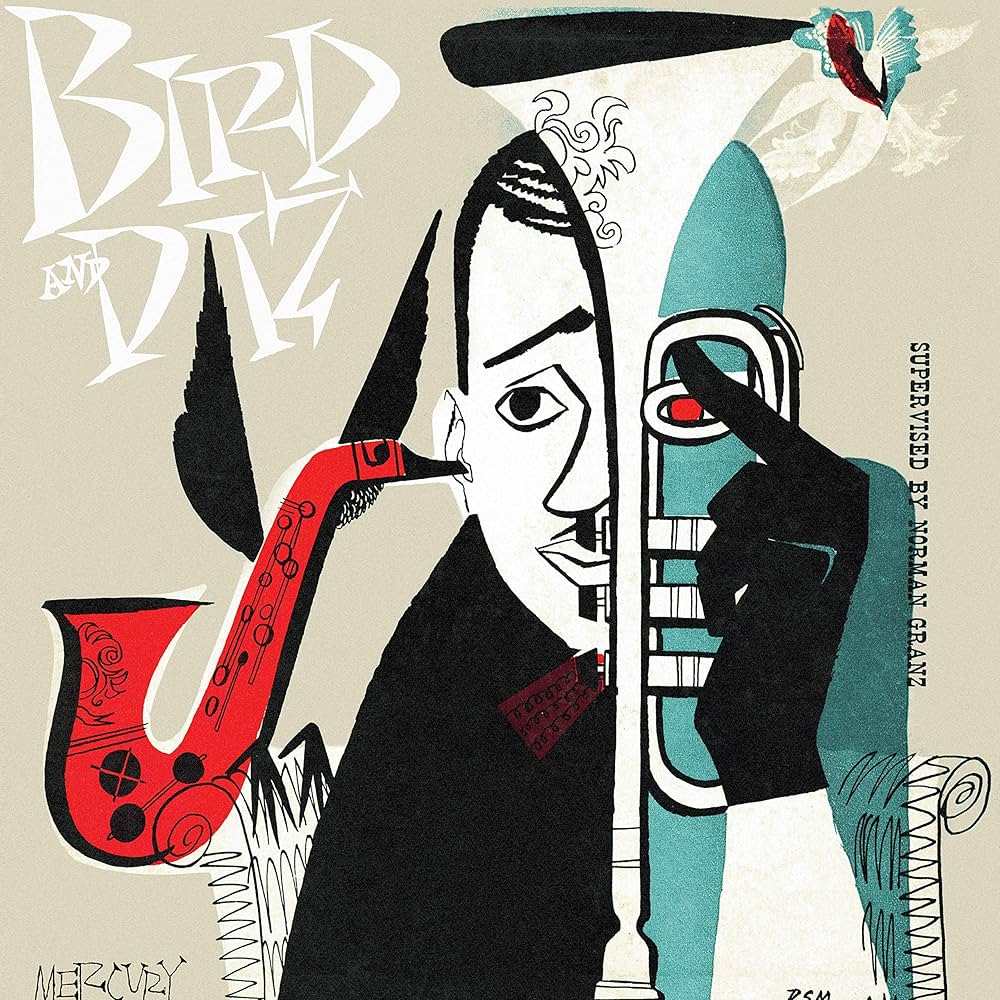
Caption
Touring and Recording, and collaborations (1950-1967)
As the recording era gained momentum, Buddy collaborated on albums with a diverse range of jazz musicians and styles, including Count Basie, vibes master Lionel Hampton, Louis Armstrong, and Ella Fitzgerald. Never afraid to step outside his comfort zone, Buddy teamed up with bop pioneers Dizzy Gillespie, Charlie “Bird” Parker, and Thelonious Monk on the 1950 album "Bird and Diz." Between the late 1940s and the mid-1960s, Buddy appeared on over 50 additional albums with various artists. During this busy and fruitful era of collaboration, he continued to tour with Tommy Dorsey and Frank Sinatra. He also played extensively with the Harry James band, contributing to over a dozen live and studio albums. Although Buddy enjoyed the freedom of not being tied to a single band leader, he still loved the big-band experience. Over twenty years after the Big Band era came to an end, Buddy had a bold idea: he wanted to return to big-band jazz full time, but joining another band was not what he had in mind. First, he’d need to find a qualified and dedicated bandleader with connections to top musicians. He’d also need to be someone who strove for perfection in himself and wasn’t afraid to demand it from others (sound familiar?) Plus, he’d need to be someone Buddy didn’t constantly bicker with. That in itself was a tall order. There was only one man who perfectly fit the bill.
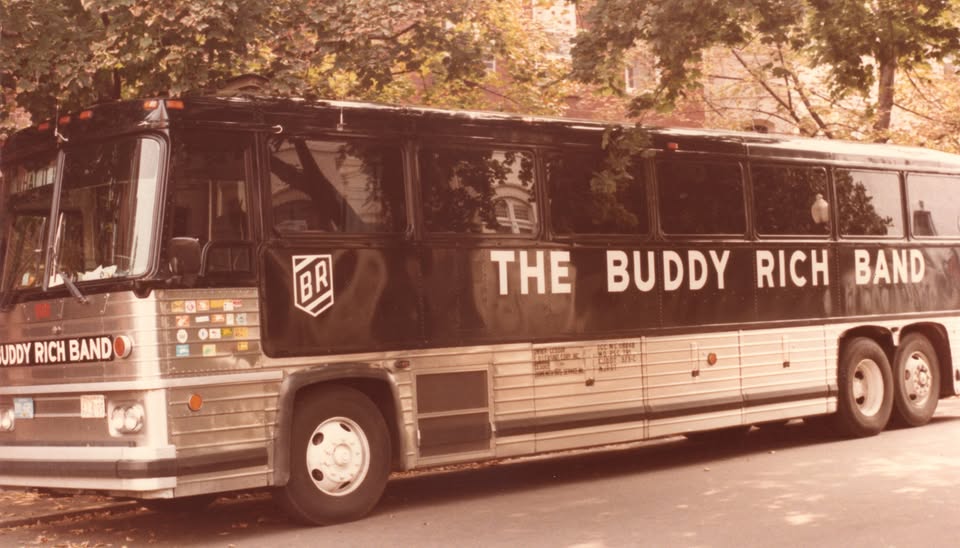
“The Buddy Rich Band” 1967-1987
Against all odds, in 1967, Buddy Rich founded his own Big Band. Naturally, Buddy had no problem attracting the best players and arrangers. The most challenging aspect of this ambitious project is finding a way to be profitable enough to sustain a full-time band of 20-odd players in the Rock and Roll era.
The Buddy Rich Orchestra’s debut album, “Buddy’s Swingin' New Big Band,” was released in 1967. It featured a selection of swing classics, contemporary music, and a medley of music from Leonard Bernstein's West Side Story, arranged for Big Band Jazz, and as a showcase for Buddy’s tremendous talents behind the kit. The familiar melodies, exciting interpretation, and stellar performance received high acclaim and generated a lot of hype. Later that same year, Buddy and his band were featured playing the 10-minute West Side Story medley on Jackie Gleason's summer series of TV specials. The massive exposure to a new and much wider audience helped Buddy kick-start 20 successful years as a drummer and bandleader.

Portrait of Buddy Rich, Arcadia Ballroom
After 30 years as one of Jazz’s premier drummers, he was more than just a Superstar musician. Somewhere along the way, his notoriously short temper and equally quick wit made Buddy a celebrity personality. Admittedly, money management was never his strong suit. Nonetheless, he was an astute promoter, using TV in the same way Swing era bands capitalized on Radio. As a regular on the Steve Allen show and one of Johnny Carson’s favorite recurring guests, Buddy never missed a chance to show off his band. In 1973, PBS aired and syndicated Rich's entire “Top of the Plaza” concert show. This event marks the first time thousands of younger drummers got a chance to witness Buddy perform in a full-length concert. Many still consider this performance to be a significant influence on their playing.
In 1970, Buddy appeared in a skit called “Lucy and the Drum Contest” with Lucille Ball, satirizing his drum battle records with Gene Krupa and Max Roach. In 1981, he reprised the gag in an unforgettable appearance with Muppets drummer Animal.
Buddy Rich helped define swing era drumming and kept the music alive and fresh for new generations to enjoy. His Big Band Machine was a testament to his creativity and devotion to the art. From the age of 20 till his death in 1987, Buddy gave his whole life to the drums and the music that he loved. At the age of 70, Buddy suffered a heart attack on stage during a drum solo, but like the demanding profession he was, the audience never knew. Three weeks later, Buddy died in the hospital from complications brought on by his recent heart attack, as well as the three that came before it. Most players would have retired, but Buddy was never “most players.” He lived in the moment in life, and behind his kit.
Whether or not he was the best drummer in the world, the best drummer in Swing, the best drummer of his time, or even the best drummer on Sesame Street, doesn’t make any difference. He was the one and only Buddy Rich. Closing in on the 100th anniversary since his rise to prominence, Buddy’s playing will continue to bring joy to music lovers and inspiration to drummers for another 100 years.
-
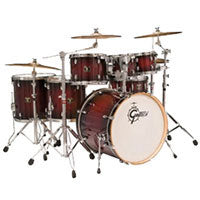
Acoustic Drum Sets
Acoustic Drum Sets The beat has been pounding away since there's been...
-

Alto Music Holiday Gift Guide 2025
The Holidays Are Here — and So Are the Best Deals of the Year The holiday season can get hectic—but there’s no need to let the “holiday crunch” become overwhelming. At...
Alto Music Holiday Gift Guide 2025
The Holidays Are Here — and So Are the Best Deals of the Year The holiday season can get hectic—but there’s no need to let the “holiday crunch” become overwhelming. At...
-

Blast From the Past: 50 Years of "Wish You Were...
With industry success to back it up, many Pink Floyd fans consider "Dark Side of the Moon" the "greatest album" ever made. With the same breath, the fans (and the...
Blast From the Past: 50 Years of "Wish You Were...
With industry success to back it up, many Pink Floyd fans consider "Dark Side of the Moon" the "greatest album" ever made. With the same breath, the fans (and the...



